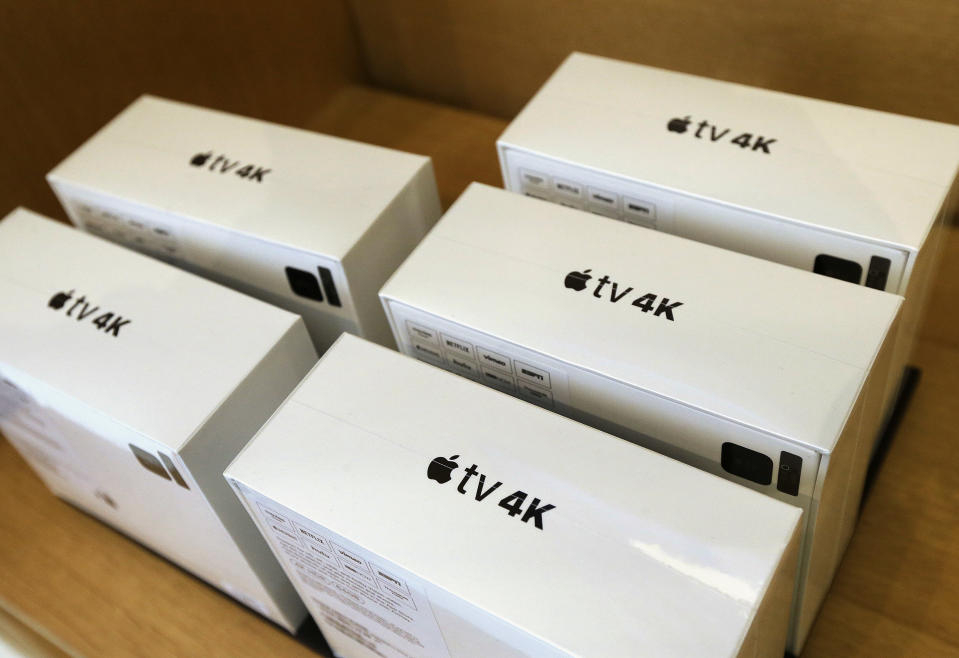Your TV could soon have these features that are better than 8K
LAS VEGAS—The most important development for TVs at CES involved a company that hasn’t exhibited at this enormous electronics gathering since the previous century.
The news that a variety of television vendors had teamed up with Apple (AAPL) to add its AirPlay wireless streaming—and in the case of Samsung, its iTunes app—promises to simplify things for online video viewers.
Prospective TV buyers should also be cheered by the ongoing drop in prices for 4K sets. And they should appreciate that deflationary cycle continuing as many TV vendors move to position 8K sets as a successor to 4K on larger screens. (Spoiler alert: That case is far from being made.)
A consumer-electronics cold war thaws
So-called smart TVs have long featured streaming-video apps from the likes of Google (GOOG, GOOGL), Amazon (AMZN), and Netflix (NFLX). But if you wanted to watch something from Apple’s iTunes, you’d need to buy an Apple TV streaming-media player or run an HDMI cable from your computer to the set.
Soon, you won’t have to. LG, Sony, and Vizio all announced AirPlay support, which will let you pick up an iPhone, iPad, or Mac, then cast a movie or TV show from that device to these sets.
Samsung is not only adding AirPlay support but a version of iTunes, which is outright amazing considering the longstanding feud between those companies.
In essence, Apple is filling in its own moat.
“They need the masses,” said analyst Carolina Milanesi of Creative Strategies. She pointed in particular to its long-rumored streaming-TV service, which would offer cord cutters yet another option to pay for a cable or satellite TV bundle.
4K continues to forge ahead
Seven years after 4K’s CES debut in 2012, that format named for its roughly 4,000 pixels of horizontal resolution now looks like the standard.
Its movement to the mainstream has helped erase differences between competing models—support for HDR (high dynamic range) color and brightness is almost a given—and crumple prices.
“There are so many amazingly good 4K TVs under $1K,” wrote Mark Vena, an analyst with Moor Insights & Strategy, in an email.
TCL nodded to that in its presentation when Chris Larson, senior vice president at its North American division, said 99% of TV sales in the U.S. last year were under $2,000. Then he said that firm would sell a 75-inch 4K set for below $1,800.

Companies hoping to coax shoppers into paying more have had to pin their hopes on increasingly fine-grained differences in picture quality. Or they can do something like LG, which showed off a 65-inch rollable OLED 4K set that almost silently whirs in and out of a rectangular base.
4K’s success looks even more remarkable considering that cable operators still ignore it, leaving viewers confined to streaming video and Blu-ray discs.
Broadcast 4K support now seems off the road map for this year, even as the 4K-compatible ATSC 3.0 over-the-air broadcast standard is now in testing in several U.S. markets. “We expect that the launch pad is really 2020,” LG communications vice president John Taylor said Monday of ATSC 3.0 TVs.
8K still isn’t worth your money
The fact that so many 4K sets only show HD content did not stop such major TV vendors as LG, Samsung and Sony from pushing 8K, which offers almost 8,000 horizontal pixels.
The Consumer Technology Association, the Arlington, Va., trade association that produces CES, expects shipments of 8K sets to retailers to hit 200,000 this year, versus 22.4 million 4K sets shipped, then climb to 1.5 million in 2022.
But with 8K content today limited to little beyond a small menu on Google’s YouTube, these manufacturers have their near-term plans set on digitally enhancing HD and 4K programming into 8K resolution, with native 8K fare coming sometime later.
“We know that a lot of our content partners are working on 8K,” said Dave Das, a vice president at Samsung. “From an industry standpoint, it's a when, not an if.”
Paul Gray, an analyst with IHS Markit, tamped down those expectations in an email, warning that no new video compression standard seems likely to shrink bandwidth appetites from the current 50 Mbps. Meanwhile, the sole country with 8K broadcast plans is Japan.
Noticing 8K’s extra pixels—33,177,600 in all, compared to 8,294,400 for 4K—also demands an exceptionally large screen. CTA, Samsung, and TCL all suggested 65 inches was a realistic minimum.
But when I inspected a Sharp exhibit of 4K and 8K 70-inch screens, with the latter showing upscaled versions of the former's content, I couldn’t tell the difference from about six feet away. (Yes, I wore my glasses.)
IHS’s Gray offered a concise conclusion to his 8K analysis: “We don’t see a convincing reason for 8K TV purchases by consumers.” Vena was only little friendlier, calling 8K “a challenging proposition for many consumers.”
That leaves 8K looking like a case of “introducing technology just for technology's sake,” to steal a critique of the industry that TCL’s Larson offered during its presentation—shortly before its declaration that it, too, was jumping into the 8K market.
Email Rob at rob@robpegoraro.com; follow him on Twitter at @robpegoraro.
More from Rob:
How your TV or broadband bill might creep up in the new year
2 toxic story lines from Facebook won’t go away in 2019
Facebook wants to give you a way to fight having your posts taken down
Google Maps will now help you find Lime scooters
Microsoft is asking the government to regulate the company’s facial recognition technology
Email Rob at rob@robpegoraro.com; follow him on Twitter at @robpegoraro.



